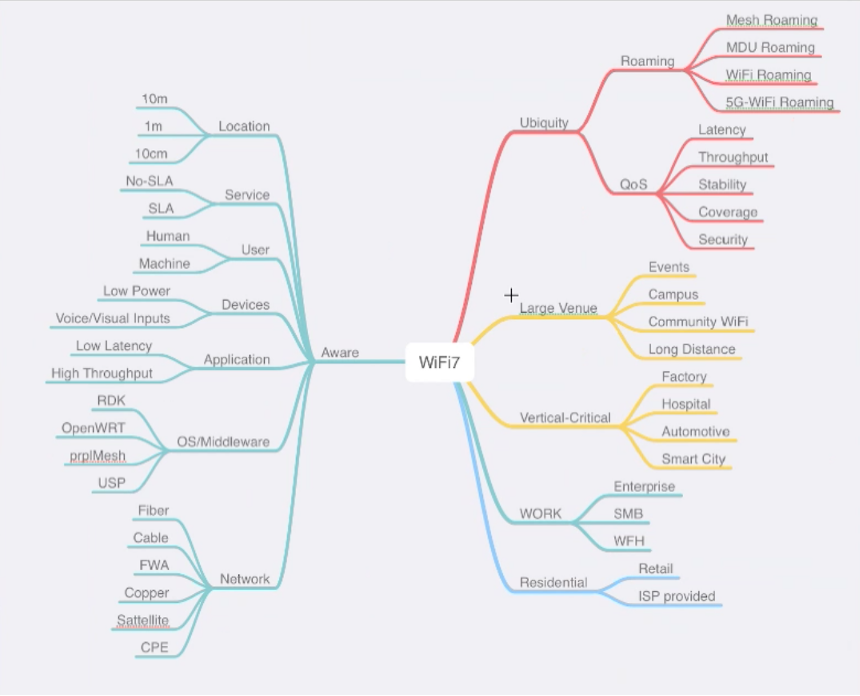Imagine walking into your smart home and immediately being recognized by your network with your 3D hologram assistant waiting at your command to show what kids are up to, how your elderly parents are doing in their house down the street, and a digital twin of a technician ready to proactively walk you through a major repair to your smart refrigerator via the latest augmented reality/virtual reality (AR/VR) capabilities.
Most devices and computing systems require reactive human input and engagement. Advances in ambient intelligence and computing involve a combination of smart devices, wearables, historical and real-time data, Artificial Intelligence (AI) decisions and indirect human activity that can seamlessly work together to prepare, adjust and configure your surroundings or environment proactively, without human commands or intervention.
Rapid advancements in technologies like ambient computing enable the merging of our physical and digital worlds and prepare us for the futuristic lifestyles in smart homes. WiFi7 is slated to be the most viable option for creating the infrastructure to support these types of in-home immersive lifestyle experiences.
Leading the shift to immersive in-home experiences
Five key WiFi7 advancements are leading the shift in human/digital interaction.
- Ubiquitous and reliable quality of service (QoS) that makes wireless connectivity equally as deterministic as wired connectivity. Wireless QoS relies on enhancements to coverage, security, stability and more. When wireless connectivity is pervasive, always on and device agnostic, it becomes invisible in the user’s experience.
- A massive upgrade to compute resources– meaning memory bandwidth and processing power that was once only available to enterprises are now extended to consumers around the globe. Today’s high-end, consumer-grade WiFi7 capable devices were considered enterprise-grade just five years ago.
- Peak throughput of 40 Gigabits per second (Gbps) – a major enabler for simultaneous delivery of bandwidth hungry applications including 3D/hologrammatic conferences, games, 8K video, Apple Vision Pro extended reality, and work from home data transfers all at the same time without interrupting any user experience.
- Low-latency architecture at consumer-grade price points that puts immersive in-home experiences within the reach of billions of people.
- Low or greatly reduced power demands on the device side, which is key to supporting the in-home proliferation of sensors and other Internet of Things (IoT) devices with minimal compute power.
The diagram below illustrates key WiFi7 capabilities and corresponding use cases and solution categories. It’s a compelling work in progress and will continue to evolve.

The DZS Mission: Enable Tomorrow’s Experience Provider
DZS enables the transformation of today’s communications service providers into tomorrow’s experience providers by helping you deliver the ultimate, differentiated subscriber experience that create loyal subscribers, reduces churn, and increases Average Revenue Per User (ARPU). This is made possible through the automation and proactive analytics capabilities of our DZS Cloud platform, where we will leverage the advanced capabilities of WiFi7 while reducing the wireless contention and network-device interoperability issues that limit the performance of this new technology.
We are among few vendors to offer end-to-end capabilities including delivering both the software and hardware infrastructure needed within the home for improved experiences. DZS is also unique in that we collaborate with a large number of ecosystem vendors to enable best-in-class experiences, not just on our own hardware or software but also across the entire vendor community.
Based on our extensive field experience across over 70 million homes, our service provider customers will benefit greatly from the launch of this new generation of WiFi on a massive scale. If past performance is an indicator of future success, we expect to see the following benefits derived from WiFi7.
Leveraging WiFi7 service providers can:
- Improve Average Revenue Per User (ARPU) with the ability to quickly launch new services like delivering bandwidth on demand for specific events and activities.
- Give subscribers more power and control of their own networks with ability to proactively identify and resolve in-home WiFi issues (up to 50 % reduction in customer service calls).
- Significantly reduce OPEX with the ability to isolate the source of connectivity problems and quickly provide prescriptive resolutions, reducing truck rolls, in many cases by more than 40%.
- Improve customer retention by up to 20% with happier, more satisfied subscribers.
Our customers are taking full advantage of their existing Customer Premises Equipment (CPE) capabilities and preparing for the upcoming WiFi7-enabled upgrade so that they will be poised to continue delivering the ultimate subscriber experience.
For more information on the WiFi 7 specification, I recommend visiting the Wi-Fi Alliance website or this page on Intel.com.
To start a conversation about how we can help you unlock the power of WiFi 6/7, connect with DZS.



 '
'